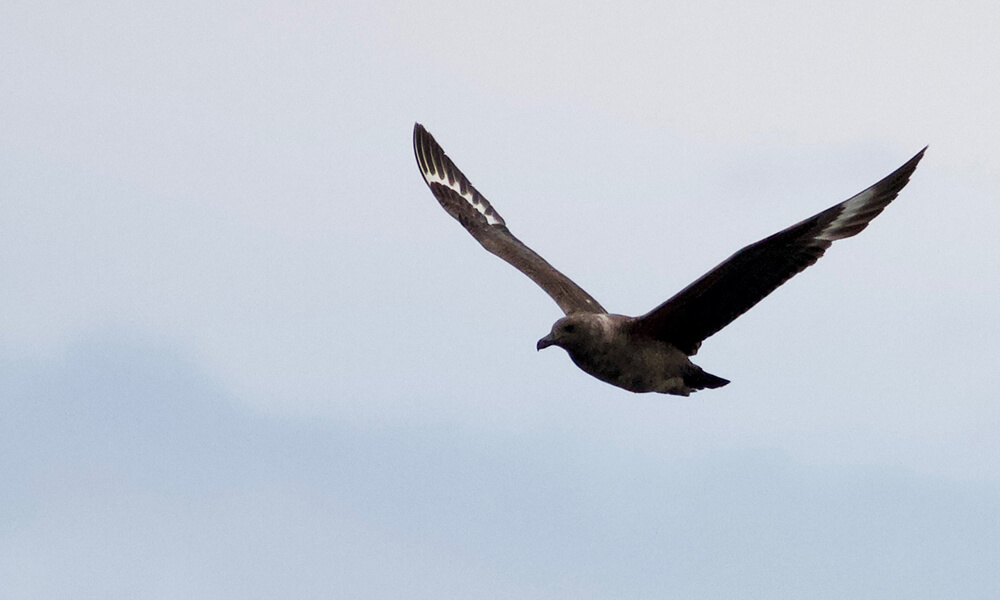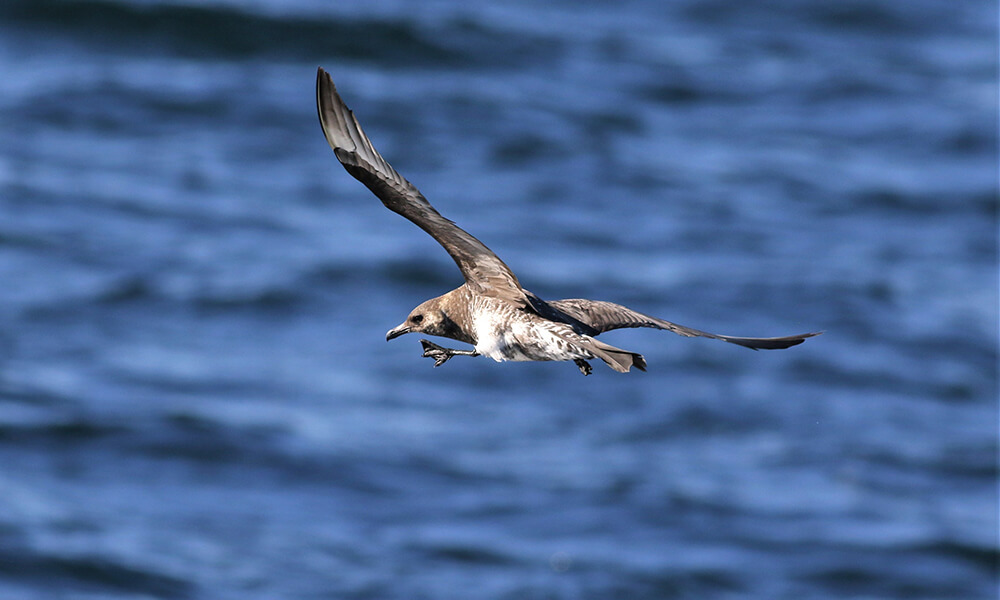Predatory Seabirds

Facts about predatory seabirds:
- Known for their piracy behavior (stealing food from other seabirds), also called kleptoparasitism.
- The name “jaeger” is derived from the German term for hunter.
South Polar Skua (Stercorarius maccormicki)

- Wingspan: 4 feet and 4 inches on average
- Home breeding territory: South polar skuas breed in the Antarctic.
- Clutch size: Two eggs
- Impacts: For the time being, there are no known threats to this species affecting their population.
- Status: As of the 2018 IUCN Red List, South polar skuas are of least concern.
- Fun fact: South polar skuas aggressively harass other seabirds on the wing and force them to disgorge their food which the skua then catch in mid-air.
Pomarine Jaeger (Stercorarius pomarinus)

- Wingspan: On average 4 feet
- Home breeding territory: Breeding occurs in the tundra north of the Arctic Circle
- Clutch size: Two eggs
- Impacts: Scientists expect that future changes to lemming populations driven by climate change will impact the breeding success of Pomarine jaegers.
- Status: As of 2018 Pomarine jaegers are listed as of least concern on the IUCN Red List.
- Fun fact: Pomarine jaegers are known for their piracy behavior. The pursued victim is forced to drop its prey, which is then seized by the attacking jaeger.
Parasitic Jaeger (Stercorarius parasiticus)
- Wingspan: About 3 and a half feet
- Home breeding territory: Breeding occurs in the Arctic tundra
- Clutch size: Parasitic jaegers lay two, sometimes three eggs.
- Impacts: Most of their breeding range is remote from human impacts.
- Status: The 2018 IUCN Red List states Parasitic jaegers are of least concern.
- Fun fact: The first part of their name (parasitic) refers to their habits of chasing gulls and terns and forcing them to drop their food. The second part of their name (jaeger) is derived from the German word for hunter.
Long-Tailed Jaeger (Sterocorarius longicaudus)

- Wingspan: About 40 inches
- Home breeding territory: Long-tailed jaegers breed in the Arctic tundra.
- Clutch size: They lay one to two freckled eggs.
- Impacts: Extended periods of low lemming populations are likely to begin to cause significant declines in the breeding population of long-tailed jaegers.
- Status: As of 2018, long-tailed jaegers are of least concern according to the IUCN Red List.
- Fun fact: Long-tailed jaegers return to the same nest site and same mate each year.
Click here for more information on pelagic seabirds of Cordell Bank National Marine Sanctuary

